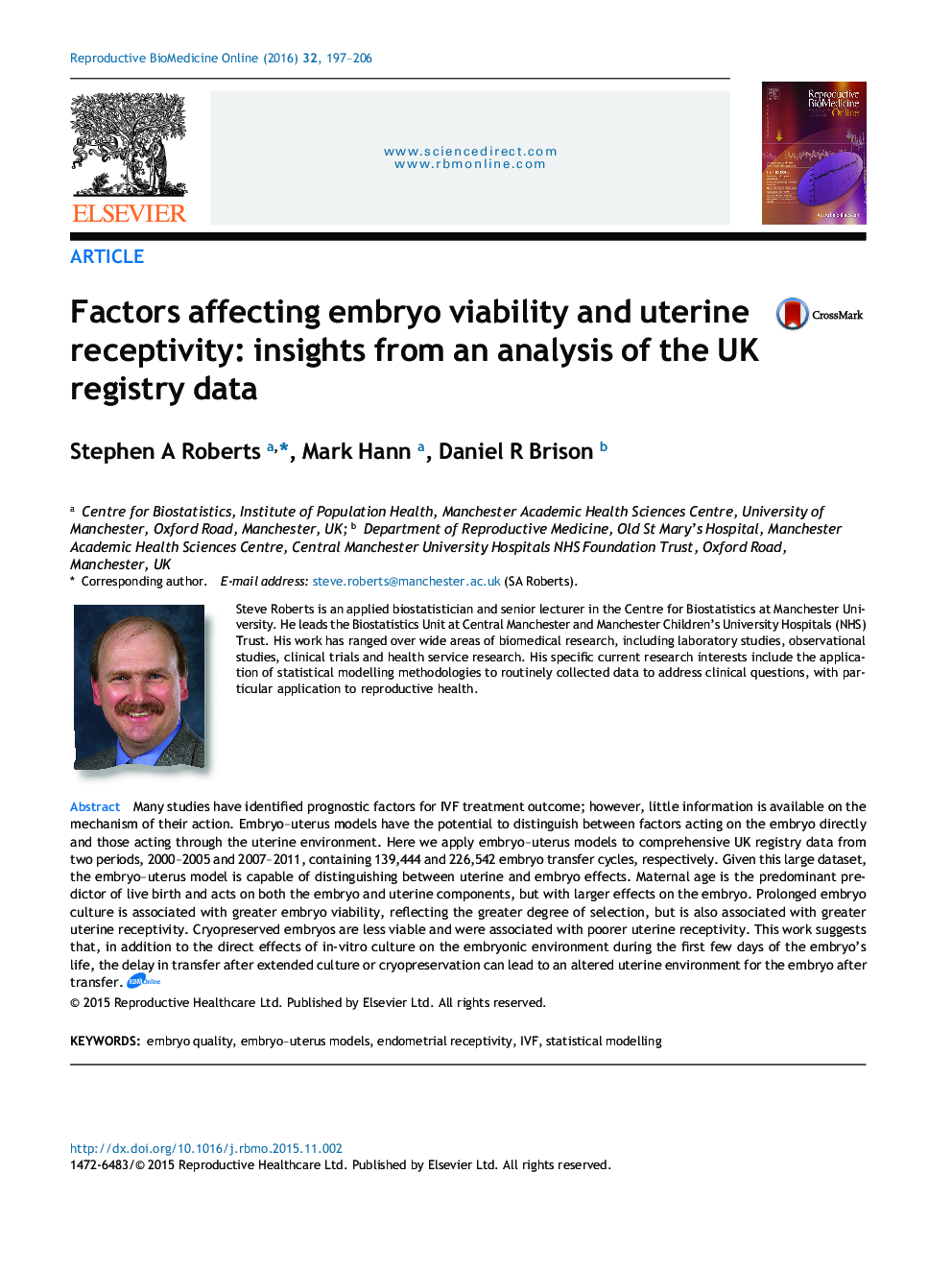| Article ID | Journal | Published Year | Pages | File Type |
|---|---|---|---|---|
| 6188634 | Reproductive BioMedicine Online | 2016 | 10 Pages |
Many studies have identified prognostic factors for IVF treatment outcome; however, little information is available on the mechanism of their action. Embryo-uterus models have the potential to distinguish between factors acting on the embryo directly and those acting through the uterine environment. Here we apply embryo-uterus models to comprehensive UK registry data from two periods, 2000-2005 and 2007-2011, containing 139,444 and 226,542 embryo transfer cycles, respectively. Given this large dataset, the embryo-uterus model is capable of distinguishing between uterine and embryo effects. Maternal age is the predominant predictor of live birth and acts on both the embryo and uterine components, but with larger effects on the embryo. Prolonged embryo culture is associated with greater embryo viability, reflecting the greater degree of selection, but is also associated with greater uterine receptivity. Cryopreserved embryos are less viable and were associated with poorer uterine receptivity. This work suggests that, in addition to the direct effects of in-vitro culture on the embryonic environment during the first few days of the embryo's life, the delay in transfer after extended culture or cryopreservation can lead to an altered uterine environment for the embryo after transfer.
